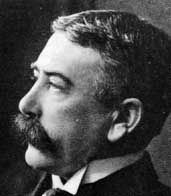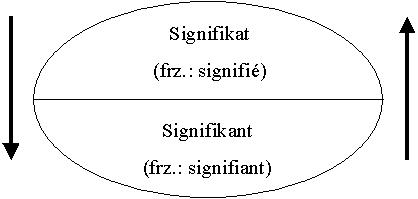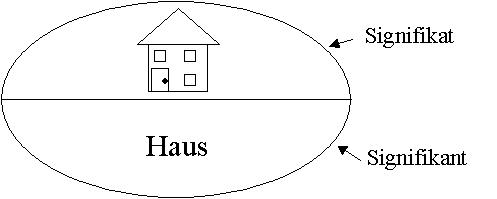Difference between revisions of "Ferdinand de Saussure"
(create, but the rest needs to be translated from german) |
(translation of the german text) |
||
| Line 1: | Line 1: | ||
{{Stub}} | {{Stub}} | ||
| − | '''Ferdinand de Saussure''' (Nov 26th 1857 – Feb 22nd 1913) was a major Swiss | + | '''Ferdinand de Saussure''' (<nowiki>*</nowiki> Nov 26th 1857 – † Feb 22nd 1913) was a major Swiss linguist. He is occasionally considered the founder of the "modern linguistics". He was undisputably one of the most influential authors of [[structuralism]] in the 20th century. |
| + | [[Image:Saussure.jpg|framed|'''Ferdinand de Saussure''']] | ||
| + | |||
| + | ===Life=== | ||
| + | |||
| + | Ferdinand de Saussure was born in November 26th 1857 in Geneva and died in February 22nd 1913 in Vufflens-le-Château near Morges. | ||
| + | |||
| + | He studied linguistics in Leipzig and Indo-European studies in Berlin and gave classes of linguistics at the University of Geneva 1906—1911. | ||
| + | |||
| + | 1916, after Saussure's dead, his students published in his name their class notes. The publication was titled „Cours de linguistique générale“. This work initiated the further development of [[strukturalism]]. | ||
| + | |||
| + | ===Contributions=== | ||
| + | |||
| + | ====Saussure's language theories==== | ||
| + | |||
| + | In „Cours de linguistique générale“ a theory of language as a system of signs is presented. | ||
| + | Saussure differentiates: | ||
| + | |||
| + | 1. human language per se ([[langage]]) | ||
| + | |||
| + | 2. abstract system of rules ([[langue]]) and | ||
| + | |||
| + | 3. speech ([[parole]]) | ||
| + | |||
| + | Saussure argues that the goal of [[linguistics]] should be to identify the elements of a language, to classify them and finally describe the their combination rules in a [[synchronic]] structure. This view was in contrast with the predominant diachronic perspectives of that time. | ||
| + | |||
| + | ====Saussure's definition of the linguistic sign==== | ||
| + | |||
| + | Following Saussure, the language consists of signs which express ideas. Linguistic sings are elements which have some [[meaning]]. Thus, the linguistic sing links the human idea of an object or concept to the form of the sign (e.g. a particular sequence of sounds). | ||
| + | |||
| + | Linguistic signs contain the [[signified]] and the [[signifier]]. This is called the [[bilateral linguistic sign]]: | ||
| + | |||
| + | |||
| + | [[Image:Laterales1.jpg|'''Bilateral linguistic sign model: general scheme''']] | ||
| + | |||
| + | '''Bilateral linguistic sign model: general scheme''' | ||
| + | |||
| + | |||
| + | [[Image:Laterales2.jpg|'''Bilateral linguistic sign model: example: german ''Haus''''']] | ||
| + | |||
| + | '''Bilateral linguistic sign model: example: german ''Haus''''' | ||
| + | |||
| + | |||
| + | In Saussure's view linguistic signs are relational elements which are motivated by the need to differentiate them from other linguistic signs. They are not innate to things or concepts they mean. Thereby the form of a linguistic sign is an arbitrary convention. | ||
| + | |||
| + | ===Other languages=== | ||
| + | *German [[Ferdinand de Saussure (de)]] | ||
[[Category:En]] | [[Category:En]] | ||
[[Category:BIOG|Saussure, Ferdinand de]] | [[Category:BIOG|Saussure, Ferdinand de]] | ||
Revision as of 13:34, 9 July 2007
| STUB |
Ferdinand de Saussure (* Nov 26th 1857 – † Feb 22nd 1913) was a major Swiss linguist. He is occasionally considered the founder of the "modern linguistics". He was undisputably one of the most influential authors of structuralism in the 20th century.
Contents
Life
Ferdinand de Saussure was born in November 26th 1857 in Geneva and died in February 22nd 1913 in Vufflens-le-Château near Morges.
He studied linguistics in Leipzig and Indo-European studies in Berlin and gave classes of linguistics at the University of Geneva 1906—1911.
1916, after Saussure's dead, his students published in his name their class notes. The publication was titled „Cours de linguistique générale“. This work initiated the further development of strukturalism.
Contributions
Saussure's language theories
In „Cours de linguistique générale“ a theory of language as a system of signs is presented. Saussure differentiates:
1. human language per se (langage)
2. abstract system of rules (langue) and
3. speech (parole)
Saussure argues that the goal of linguistics should be to identify the elements of a language, to classify them and finally describe the their combination rules in a synchronic structure. This view was in contrast with the predominant diachronic perspectives of that time.
Saussure's definition of the linguistic sign
Following Saussure, the language consists of signs which express ideas. Linguistic sings are elements which have some meaning. Thus, the linguistic sing links the human idea of an object or concept to the form of the sign (e.g. a particular sequence of sounds).
Linguistic signs contain the signified and the signifier. This is called the bilateral linguistic sign:
Bilateral linguistic sign model: general scheme
Bilateral linguistic sign model: example: german Haus
In Saussure's view linguistic signs are relational elements which are motivated by the need to differentiate them from other linguistic signs. They are not innate to things or concepts they mean. Thereby the form of a linguistic sign is an arbitrary convention.
Other languages
- German Ferdinand de Saussure (de)


